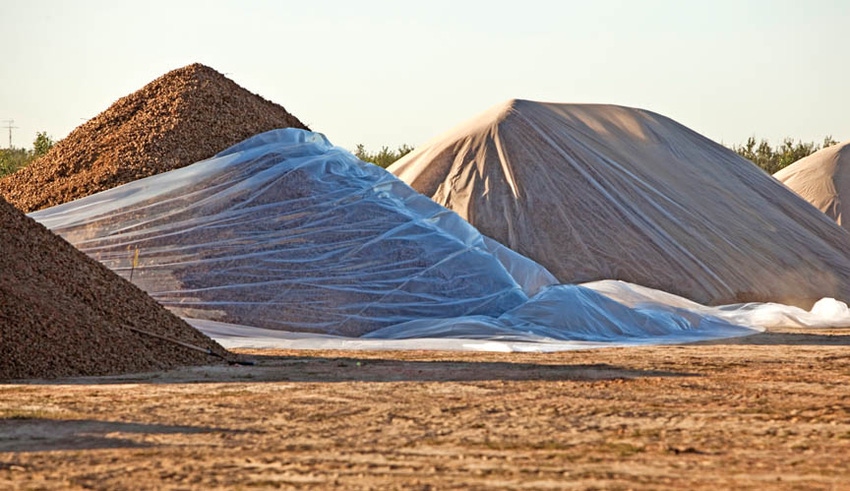
Research findings by University of California Cooperative Extension farm advisors and specialists over the past few years have revealed ways of tackling some late winter almond management tasks that are more effective than customary practices.
For example, results from more than a decade of research by Roger Duncan, UCCE farm advisor for Stanislaus County, show that trees which have gone essentially unpruned for most of their life in the orchard continue to yield as well or better than trees that have been conventionally pruned every year.
“The evidence is pretty compelling,” says David Doll, UCCE farm advisor for Merced County.
Many growers prune their older trees in the fall after harvest. Typically, growers prune younger trees, those in their first, second and third leaf, growing on heavier soils between leave drop in November and leaf out in February. However, in the sandy soils in his area, growers usually wait until late January or into February before pruning their younger blocks.
For growers who chose to prune in winter, he recommends doing so four or five days before any rainfall is predicted or waiting until after the predicted rain event. Rain can trigger sporulation of fungal pathogens, which can infect the pruning wound. Pruning wounds are susceptible for one to three weeks, depending upon the size. This type of infection can lead to formation of cankers. If not prevented, these cankers can, eventually, cut off the flow of water and nutrients to those areas of the tree above the wound.
However, the damage may not become apparent for another three or four years. Once observed, and depending on location of the cankers, it may be too late to save the tree. In fact, the only treatment at that point is to remove the infected branch by cutting 10 inches below the infected tissue.
Based upon his studies, most infections that cause eventual tree loss involve cuts made along the trunk or primary scaffolds. These cuts are typically done after the first or second year of growth. Cuts made higher in the tree do not seem to cause as much damage. “If pruning wound cankers form in the secondary and tertiary scaffolds, you’ll probably lose no more than about a tenth of your tree,” Doll explains. “That’s not enough to worry much about. But, if pruning wounds on the trunk or primary scaffold become infected, eliminating the canker isn't possible, and the tree will gradually become unproductive.”
The fungi associated with these cankers are part of the Botryosphaeriaceae – a large group of fungi that are found within the environment. In addition to almonds, they’ve been found to infect pruning wounds of grapes, walnuts, and other perennial crops, he reports.
The incidence of pruning wound cankers has been increasing in both Merced and Stanislaus Counties over the past few years, he notes. Research to understand why is just beginning. The greater prevalence of the cankers may be related to the increased acreage and over-lapping ranges of almond and other perennial crop hosts, Doll adds.
Another common practice that growers may want to reconsider is applying nitrogen in January or February. A number of UC Davis and UCCE studies show that a more cost-effective, more environmentally-friendly approach is to delay soil nitrogen application until a few weeks before full leaf expansion, Doll reports. Usually that occurs in mid to late March. Up until then, trees rely on their own stored reserves to meet their nitrogen needs.
Typically, growers apply nitrogen, often in the form of calcium nitrate or UAN, depending on price and type of soils, with irrigation water,
“Almond trees don’t begin pulling nitrogen out of the soil until they are leafed out,” he says. “That longer window can improve your nitrogen efficiency by allowing you to wait until after the rainy season to make your application. That, in turn, can reduce the risk of leaching and nitrogen contamination of groundwater significantly.”
January and February is a good time to apply potassium if needed, Doll notes. Today’s lower potassium prices make large applications of potassium sulfate much more affordable than they have been. However, sandy and other lighter soils call for a different approach in applying the material than heavier soils, like clay and clay loam, he adds.
In the case of the heavier soils, Doll and other UCCE farm advisors recommend applying potassium sulfate in a narrow band, say 8 inches wide, on the soil surface within the drip line of tree. This saturates the soils' cation exchange sites and increases the movement of potassium ions deeper into the root zone.
However, because particles of soils with a low cation exchange capacity (CEC), such as sandy or other coarser types, can’t adsorb as much potassium as clay particles, potassium can be leached from the rooting zone. For these lighter soils, he recommends spreading the potassium material across a 3-foot wide strip within the drip line of the tree
“This increases the volume of soil in which the potassium is applied, allowing for an increased area of availability for the tree,” Doll says.
More from Western Farm Press
AK-47 rifle was agriculture’s giant loss?
About the Author(s)
You May Also Like




